Italy earthquake: Search for survivors as death toll tops 160
- 2 hours ago
- Europe
Thousands of rescuers have searched through the night for survivors following Wednesday's earthquake in a mountainous area of central Italy.
Many people are still believed to be buried under rubble and more than 4,300 rescuers are using heavy lifting equipment and bare hands to find them.
More than 160 people have died and at least 368 were injured, officials said.
Many of the victims were children, the health minister said, and there were warnings the toll could rise further.
- Confusion and shock: Witnesses give their accounts
- In pictures: before and after
- Quakes 'ever present' for Italy's Apennines
- History of deadly earthquakes
- Can quakes be predicted?
Among the victims was an 18-month-old toddler, Marisol Piermarini, whose mother Martina Turco survived the deadly 2009 earthquake in L'Aquila and moved away from there after the experience, Italian news agency Ansa reported.
Ms Turco was being treated in hospital after being pulled from the rubble in the village of Arquata del Tronto, Ansa said.
Late on Wednesday there were cheers in the village of Pescara del Tronto when a young girl was pulled alive from the rubble after being trapped for 17 hours. Almost all the houses there had collapsed, the mayor said.
The 6.2-magnitude quake hit at 03:36 (01:36 GMT) on Wednesday 100km (65 miles) north-east of Rome.
Hardest hit were the small towns and villages in the mountainous area where the regions of Umbria, Lazio and Le Marche meet.
People there are spending the night outside or in tents provided by the emergency services.
 REUTERS
REUTERS REUTERS
REUTERS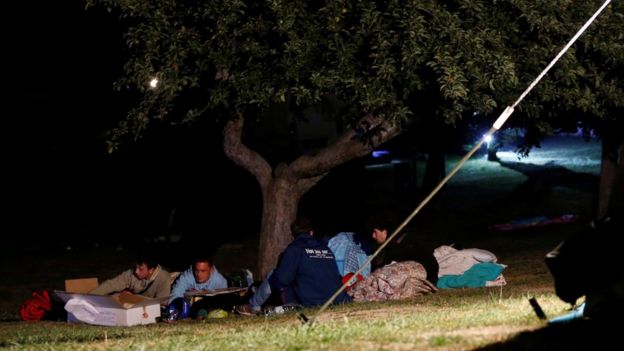 REUTERS
REUTERS
At least 86 of the victims were in the historic town of Amatrice and in nearby Accumoli.
The mayor of Amatrice said three-quarters of the town had been destroyed and no building was safe for habitation.
Many of those affected were on holiday in the region. Some were in Amatrice for a festival to celebrate a famous local speciality - amatriciana bacon and tomato sauce.
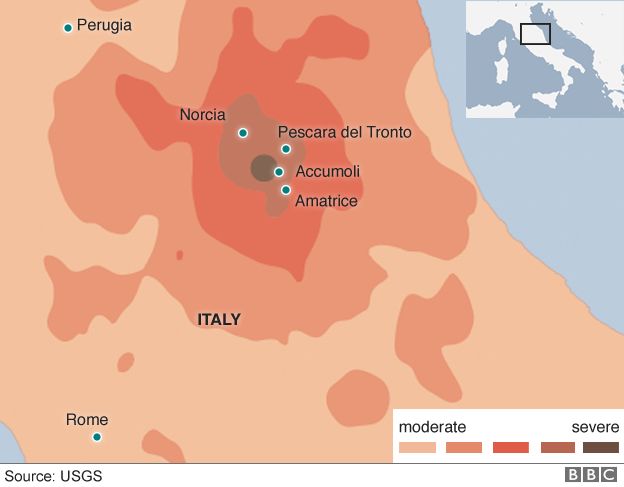
Italy's National Institute of Geophysics and Volcanology said it had recorded more than 200 aftershocks by 15:00 (13:00 GMT) on Wednesday.
The country is no stranger to earthquakes: the 2009 L'Aquila tremor killed more than 300 people and in May 2012 two tremors nine days apart killed more than 20 people in the northern Emilia Romagna region.
Why is Italy at risk of earthquakes? By Jonathan Amos
Earthquakes are an ever-present danger for those who live along the Apennine mountain range in Italy.
Through the centuries thousands have died as a result of tremors equal to, or not much bigger than, the event that struck in the early hours of Wednesday. The modern response, thankfully, has been more robust building and better preparation.

Mediterranean seismicity is driven by the great collision between the African and Eurasian tectonic plates; but when it comes down to the specifics of this latest quake, the details are far more complicated.
The Tyrrhenian Basin, or Sea, which lies to the west of Italy, between the mainland and Sardinia/Corsica, is slowly opening up.
Scientists say this is contributing to extension, or "pull-apart", along the Apennines. This stress is compounded by movement in the east, in the Adriatic.
The result is a major fault system that runs the length of the mountain range with a series of smaller faults that fan off to the sides. The foundations of cities like Perugia and L'Aquila stand on top of it all.
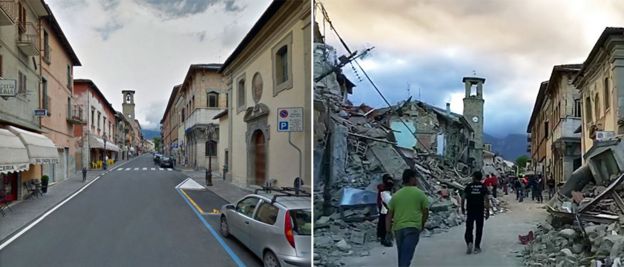 GOOGLE/AP
GOOGLE/AP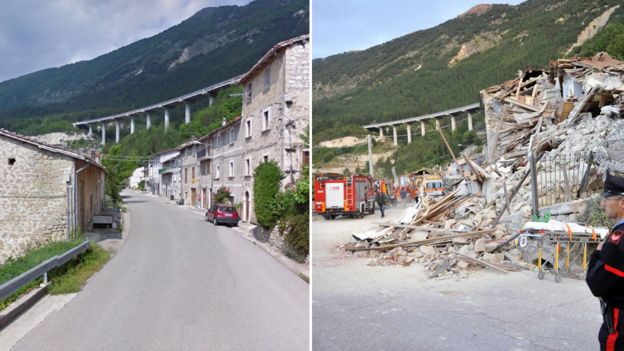 GOOGLE/EPA
GOOGLE/EPAEurope
Turkey-backed rebels 'take Syrian town'
- 24 August 2016
- Europe
French 'burkini ban' images fuel debate
- 24 August 2016
- Europe
French submarine company springs a leak
- 24 August 2016
- Business
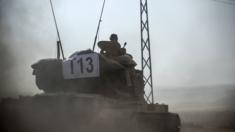


No comments:
Post a Comment
Please leave a comment-- or suggestions, particularly of topics and places you'd like to see covered